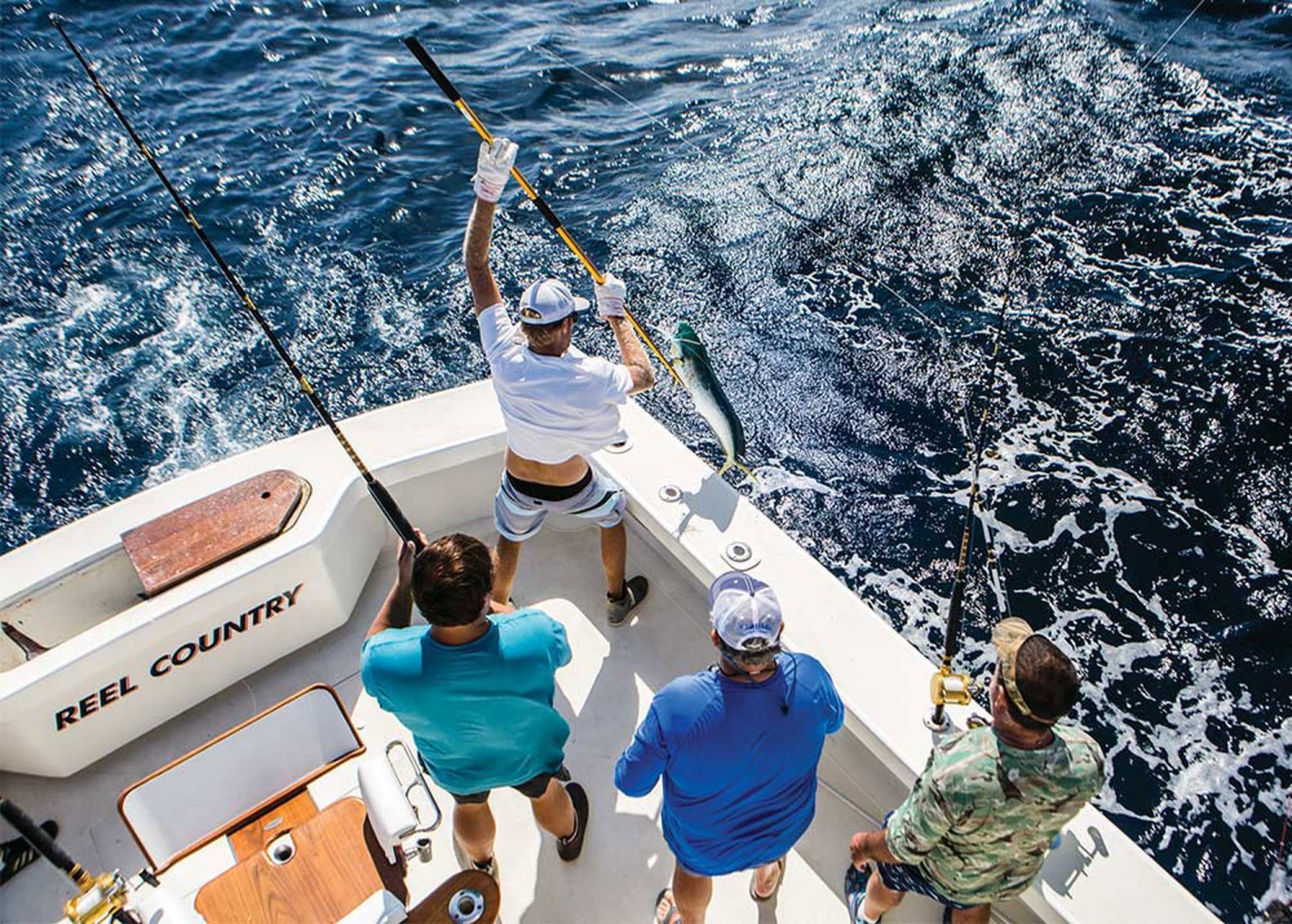Article Courtesy: saltwatersportsman.com | Originally Published: 11/20/18 | Click here for original article
Offshore Fishing Accessories
Specialized gear for big game fishing
Fishing boats keep getting bigger as more builders join the 40-plus-foot ranks of offshore-capable boats rigged with powerful, fuel-efficient outboards, and the distinction between diesel sport-fishers and center-consoles becomes fuzzier. Range is nearly the same. Sport-fishers have the edge in fuel capacity, while center-consoles have the speed advantage. And when it comes to fishing accessories for big-game species like billfish, tuna and wahoo, there’s really not a lot of differences these days.
“We carry everything the big boats have,” says Tim Achee of Covington, Louisiana, a team member on Split Decision, a 37 Freeman that competes on the Gulf of Mexico big-game tournament circuit. “We have everything but air conditioning and a proper relief station. But we do have a Yeti bucket,” he adds.
Split Decision owner Scott Robichaux of Grand Isle, Louisiana, has outfitted his catamaran with gear and accessories to catch and keep bait alive, as well as conquer triple-digit-weight blue marlin. Most of the items are duplicated, including AFTCO flying and straight gaffs, tag sticks, Taco Marine carbon-fiber outriggers, short teaser rods on bent butts that run off the hardtop rocket launcher, and even four factory-installed tuna tubes and another four temporarily mounted on the transom for tourneys.
“Having different accessories gives us the most options,” he explains. “I call the boat Split Decision because we never know where we might end up. We could fish the in-close oil rigs or make a run all the way out to the Green Canyon. Multiple tuna tubes give us more ammunition. Typically, we free-line a live blackfin or small yellowfin tuna to try for that early-morning blue marlin bite. By midday, we switch over to trolling, so having all the right tools and a full complement of accessories on board just increases our opportunities.”
Ryan Dumas, a teammate aboard Mark Wade’s 39 Nor-Tech Questionable Judgment, based on Dauphin Island, Alabama, is another firm believer in redundancy. A pair of standard transom tuna tubes are augmented by up to eight temporary ones in tournament settings. “We always try to take at least two of everything: gaffs, bait nets, etc.,” Dumas explains, “just in case we lose one overboard.”
The boat’s normal arsenal includes an 8-foot flying gaff with a 6-inch hook and the IGFA allowable length of 5?8-inch rope. A pair of 8-foot straight gaffs with 4-inch hooks are also on board, along with a 4-foot gaff with a 2-inch hook for dolphin.
The team carries at least two kites for surface presentations, and a couple of dip nets to scoop frisky baits out of the livewell with the least amount of stress. “We’re in a center-console, but we’re still competing against 72-foot Vikings, so we have to be prepared,” Dumas says.
Downriggers are invaluable for getting live baits or lures below the surface when targeting wahoo and tuna. Digital models take the guesswork out of depth settings and make retrieval easier. A pair on the transom corners offers even more options and adds yet another layer of redundancy.
Don’t overlook hand tools on the accessory checklist either. Crimpers, pliers and bait knives are essential for rigging, along with hook files, a strap wrench for tightening rod lockdown nuts, and rod tethers to keep those expensive rod-and-reel combos in the boat when encountering rogue waves or unexpected knockdowns.
Most outboard boats forgo fighting chairs due to space limitations, so quality harnesses and fighting belts are critical for the alternate stand-up style of fishing. One size definitely doesn’t fit all, however.
Try on the harness and gimbal belt beforehand to ensure a proper fit. Harnesses should be thickly padded and offer good support for the lower back and shoulders. The gimbal belt should be wide enough to straddle the upper legs, while the kidney harness needs to fit snugly around the hips to maintain the proper center of gravity. The ideal stand-up posture forms a 60-degree triangle for maximum leverage and stamina. And whoever is up first on the rod should adjust the straps and clips long before the initial strike, not after line is pouring off the reel.
Bringing a knife to a gun fight is never fair odds. Add the right big-game accessories, though, and large center-consoles are on equal footing when going head-to-head with their diesel counterparts.






